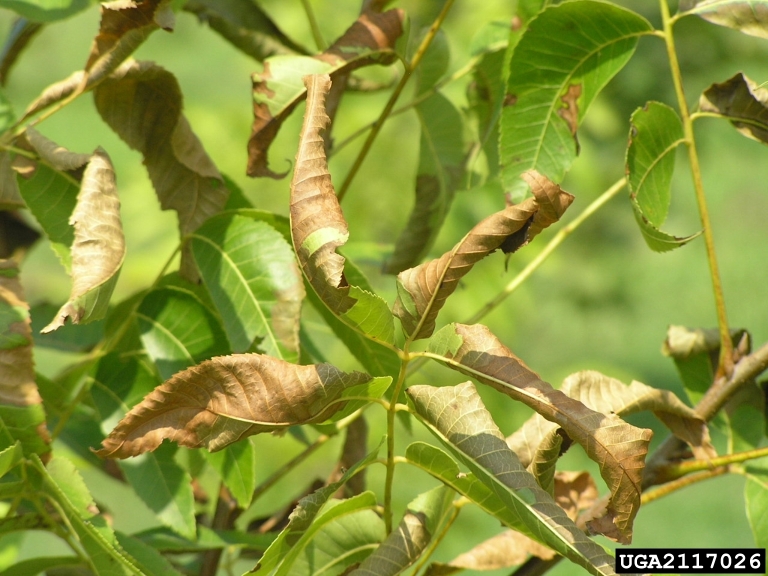Xylella biosecurity alert
Greenlife Australia has issued a Biosecurity Alert for the bacterial disease pest Xylella spp. following the release by The Department of Agriculture, Fisheries and Forestry of a draft pest risk analysis report for pathogens in the genus. Xylella fastidiosa is the highest ranked pest threat to Australian horticultural and plant-based industries, and the environment.
The draft report proposes risk management measures, combined with operational systems, and a period of post-entry quarantine in Australia prior to release, to ensure biosecurity standards are met. Stakeholder comments on the draft report closed on 1 March 2023.
The Alert says no Xylella species is known to occur in Australia and no known Xylella vectoring insects are (currently) present in Australia.
The draft DAFF report proposals’ aim of preventing the bacteria’s entry into Australia: The proposed measures are differentiated according to the assessed Xylella status of the country of origin, the host status of the plant taxonomic grouping, any offshore measures applied, and the form of the commodity imported: non-tissue culture (rooted plants, cuttings, budwood, corms and bulbs), tissue culture or seed.
Proposed requirements include mandatory laboratory testing for host nursery stock from countries/regions where Xylella is known to be present and seeds for sowing from any source location, as well as operational systems, and/or a period of Post Entry Quarantine (PEQ) in Australia for disease screening to confirm the imported material can be released.
The proposed measures are largely consistent with the current emergency measures, but some amendments are indicated. These proposed amendments include changing the taxonomic level of plant regulation from the current target at plant family level to a proposal for regulating at plant genus level. That is, current regulation includes all plants within a family that has one or more species confirmed as a natural host of Xylella spp., and the proposal would instead regulate all plants within a genus of plants that has one or more species confirmed as a natural host of Xylella spp.
DAFF estimates that more than 10,000 plant genera and 20,000 plant species are currently regulated under the existing family-level regulation of plant hosts of Xylella spp. For genus-level regulation, the number of genera that contain one or more confirmed natural plant hosts of Xylella is 356, with a corresponding reduction in the number of species regulated.
Some Australian native plants, ubiquitous across the Australian landscape, are also known to be susceptible to the pest overseas, e.g. Acacia spp. and Syzygium spp.
Three experimental host plant genera, Phlox (Polemoniaceae), Simmondsia (Simmondsiceae) and Linum (Linaceae), are also included as they have strong associations as host plants of competent Xylella vector species.
Xylella fastidiosa is one of the most significant emerging plant pests worldwide, causing a broad spectrum of diseases across a wide range of horticulturally important host plants. Xylella is reported to cause hundreds of millions of dollars in production losses, and high financial costs associated with attempts to manage the disease and its insect vectors in countries where it is present.
The pest
X. fastidiosa is an aerobic, gram-negative bacterium of the genus Xylella native to the Americas. It grows in the water transport tissues of plants and is transmitted by xylem sap-feeding insects.
Symptoms
Xylella bacterium cause a variety of symptoms which can include leaf scorch, wilt, dieback and plant death. Symptoms can be identical to symptoms caused by drought or other stresses such as frost damage, disease or establishment problems. Confirmation of Xylella infection therefore usually requires laboratory testing.
Spread
The bacterium is transmitted between plants via insects which feed on plant sap. Spread of the disease over longer distances occurs when infected plants are transported (legitimately in trade or otherwise).
Plants at risk
Following Xylella outbreaks in southern and south west Europe, the UK Department for Environment Food and Rural Affairs (DEFRA) has identified nine Xylella high-risk plant hosts there including:
- Polygala myrtifolia (polygala)
- Olea europaea (olive)
- Salvia rosmarinus (rosemary)
- Lavandula spp. (lavender)
- Prunus spp. (plums, cherries, almonds etc.)
- Nerium oleander (oleander)
- Coffea spp.(coffee)
- Shrubby Veronica spp. (also known as hebe)
- Spartium junceum (Spanish broom)
Other important hosts noted by DEFRA include:
- Acer spp. (maple)yet
- Fraxinus spp. (ash)
- Platanus spp. (plane)
- Quercus spp. (oak)
- Ulmus spp. (elm)
- Vaccinium spp. (blueberries)
- Vitis spp. (grapevine)
(*Xylella has not been detected in the UK. Three subspecies of Xylella have been detected in Europe. It has also been recorded in the Americas, Taiwan, Israel, Iran and the Caribbean.)
Vectors
Insects feeding on plant sap. Two exotic plant-feeding insects, meadow spittle-bug and the glassy winged sharpshooter, are also the subject of biosecurity measures to keep them out of Australia.
Main photo: Scorched leaves are a symptom of Xylella infection. (Image: Rebecca A Mellanson Bugwood Org)

